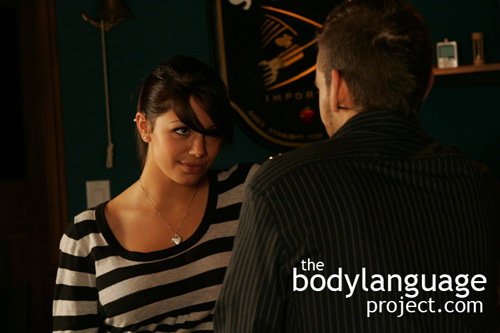If the eyes of men and women meet and there is a spark, the eyes will follow specific patterns across the face to form an intimate gaze. Initially there will be a quick burst to establish interest, than the eyes will be quickly averted. Women will show interest by breaking eye contact downward versus to the left or right. Looking left or right is seen as “stealing a look” where one either, wishes not to be caught, or is simply scanning the room. Stealing looks is what married men do when they notice attractive women. Since married men have no true intention of pursuing, they look covertly so as to avoid detection of their spouse and that which has gained their temporary interest. In other words, they steal looks for their own sake and wish to pay no price for its sake.
This is why interested women will be found to avoid looking left or right so as not to appear to be stealing looks. Looking down to break eye contact is sexy because it’s coy, submissive and teasing. Looking down punctuates sexual interest. Looking sideways is a willful indication that one is scanning the room entirely and is not checking someone else out. Although at times, a sideways look will show timidity about being caught or that one isn’t ready to reveal their true interests.
If interest is mutual and conversation arises, scanning of the face will take place. The eyes will form a pattern from a triangular pattern from eye to eye and down to the mouth or chin. The eyes will also wander briefly to other parts of the face, but the vast majority of time will be spent looking at the eyes and mouth. Gaze duration during intimacy lasts in bouts of approximately four to five seconds. When the eyes finally do leave the face they will check out the rest of the body, to examine clothing, overall build, jewelry and rings. Both sexes, despite social norms, will glance over more intimate areas of the body such as the crotch and breasts. Men tend to check women out from the ground up, starting from the legs, then to the crotch, torso, breasts, shoulders, then face. The vast majority of women find being scanned by men to be a turn-off, however, studies show that women habitually check men out just as often, they simply do it much more discretely.


